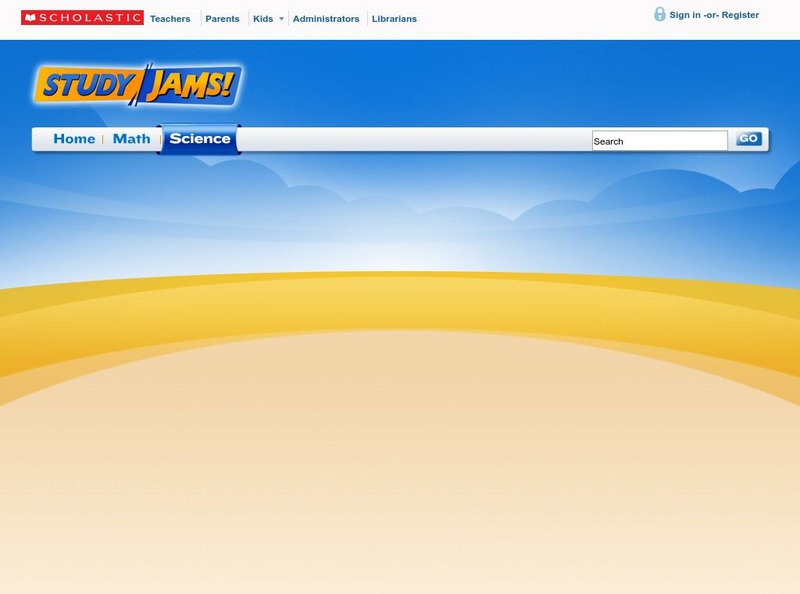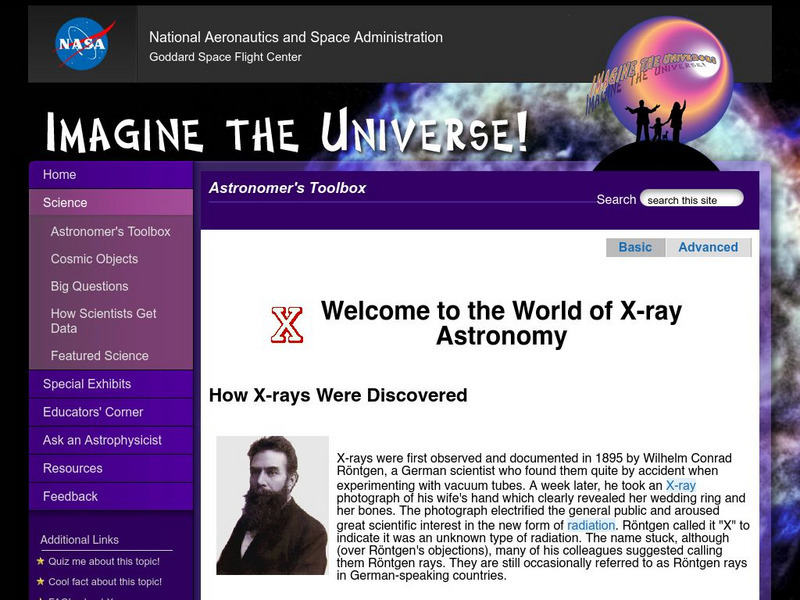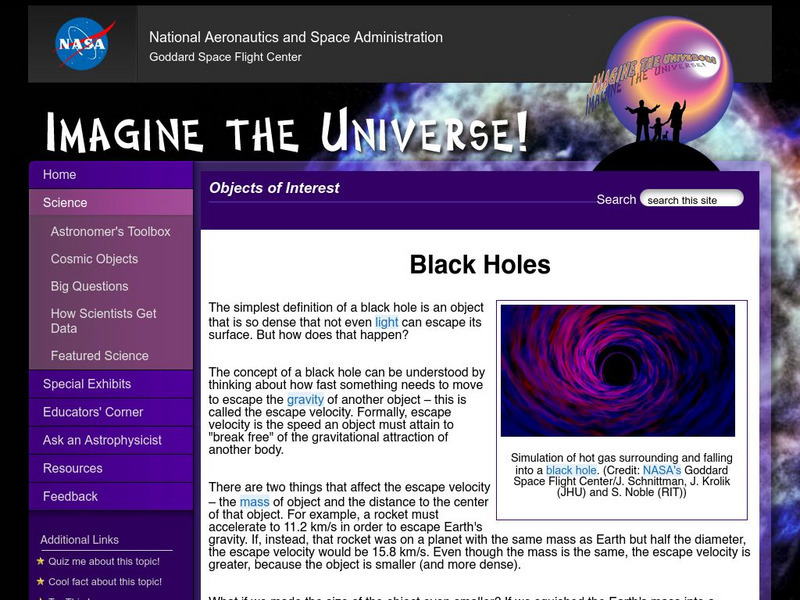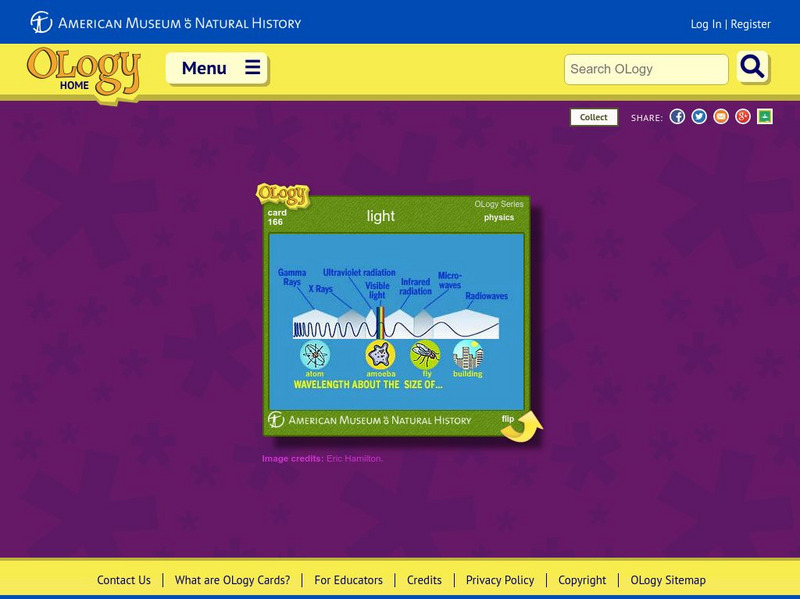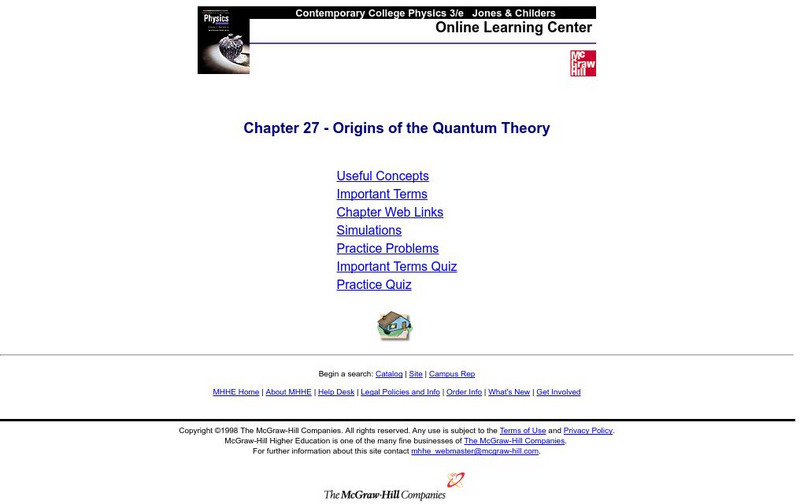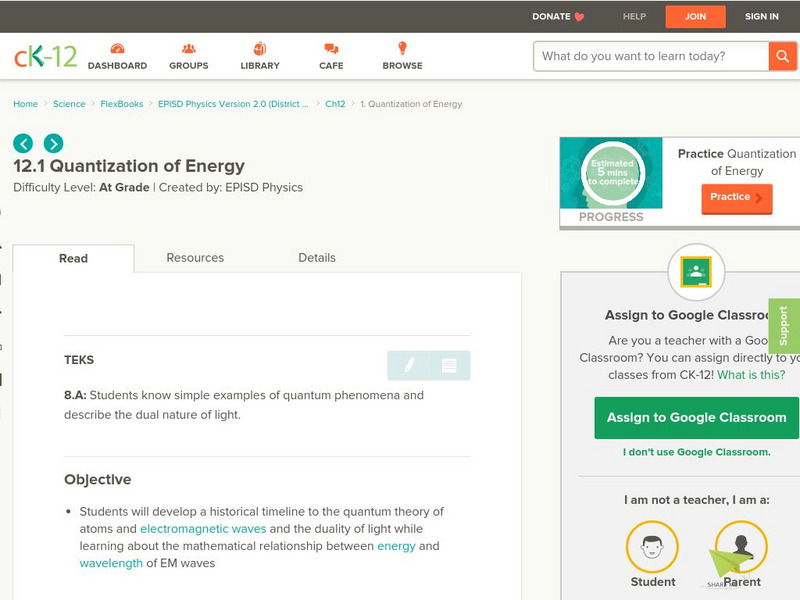PBS
Pbs Learning Media: The Electromagnetic Spectrum: Frontline
This video segment adapted from FRONTLINE introduces the electromagnetic spectrum and explains how the various types of electromagnetic waves are distinguished by the amount of energy each wave carries.
Georgia State University
Georgia State University: Hyper Physics: Wave Particle Duality
The dualistic nature of light is discussed. The photoelectric effect and the Davisson-Germer experiment are contrasted as empirical evidence supporting each of the two views - particle and wave - of the nature of light. The photoelectric...
Concord Consortium
Concord Consortium: Stem Resources: Spectroscopy
Web-based activity walks learners through the use of spectroscopy in determining the identity of atoms and molecules by defining the excited state of atoms, the frequencies of emitted photons, and atoms' ability to absorb them....
PBS
Pbs Learning Media: Periodic Table of the Elements
This interactive periodic table developed for Teachers' Domain provides detailed information about the chemical properties of elements and illustrates the electron configurations that determine those characteristics.
Annenberg Foundation
Annenberg Learner: Physics: Early Unification for Electromagnetism
Discusses the connection between electricity and magnetism and the early work of Michael Faraday and James Clerk Maxwell. Electromagnetic interactions were first described by Maxwell. Continues on with a discussion of quantum physics and...
PBS
Pbs Learning Media: Einstein: How Smart Was He?
This essay from the NOVA Web site explores the impact Einstein made on physics and most everything we know about the cosmos.
American Museum of Natural History
American Museum of Natural History: O Logy: Stuff to Do: Light Quest
Light Quest activity, for two to four players, designed to explain how atoms create light and where photons come from.
Simon Fraser University
Chem1 Virtual Textbook: The Language of Light
Acting as a subtopic of the General Chemistry Virtual Textbook's section on Atoms and the Periodic Table, this site discusses light in relation to particles and waves. The difference between particles and waves is addressed along with...
Museum of Science
The Atom's Family: Radiometer
Help Dracula find out about light waves by using a virtual radiometer.
Wikimedia
Wikipedia: The Black Hole
This site examines the black hole as an object in astrophysics. Delve into this comprehensive resource that covers this concept from its history, to qualitative physics, the reality of black holes, mathematical physics and more.
Open Curriculum
Open Curriculum: Light as a Particle
Students learn about the properties of light as a photon and the wave-particle duality.
Scholastic
Scholastic: Study Jams! Science: Energy, Light and Sound: Light
A video and a short quiz on the basic concepts and vocabulary for understanding light energy.
NASA
Nasa: Imagine the Universe: Welcome to the World of X Ray Astronomy
Site recounts how X-rays were discovered as well as who discovered them. Offers graphics, links to facts on this topic, a quiz, and teacher resources.
NASA
Nasa: Imagine the Universe: Black Holes
Learn what black holes are and the myths that surround them.
American Museum of Natural History
American Museum of Natural History: Light O Logy Card
Flip over this interactive OLogy card and start learning bite-size pieces of useful information about light.
Georgia State University
Georgia State University: Hyper Physics: Photoelectric Effect
Using graphics, words and numbers, the photoelectric effect is described and explained. Planck's theory about quanta of light is explained. Photon energies for the various regions of the EM spectrum are listed. An interactive JavaScript...
Science Struck
Science Struck: How Does Light Travel Through Space and Other Media?
A detailed discussion of the nature of light, how it can travel through a vacuum, and how the speed of light is affected when light travels through a medium.
McGraw Hill
Mc Graw Hill Companies: Origins of the Quantum Theory
An indexing page for Chapter 27 (Origins of the Quantum Theory) of the companion web site for McGraw Hill's Contemporary College Physics textbook. Includes several worthy pages with chapter notes, simple definitions, online computer...
Concord Consortium
Concord Consortium: Excited States and Photons
Investigate how atoms can be excited to give off radiation (photons) with models of electron energy diagrams.
CK-12 Foundation
Ck 12: Quantization of Energy
[Free Registration/Login may be required to access all resource tools.] Students will understand how to use Planck's constant to calculate the relationship between a photon's energy and the frequency of emitted light. Includes a...
Lawrence Berkeley National Laboratory
Berkeley Lab: Gamma Decay
A brief explanation of the process of gamma decay is provided.
Lawrence Berkeley National Laboratory
Berkeley Lab: Basic Nuclear Science Information
Site provides the ABC's of nuclear science including radioactivity and gamma decay to fission and comic rays.
University of Sydney (Australia)
Ionospheric Physics: Photoionization
Defines photoionization analytically, describing it in terms of formulas. Contains links to other sites related to atmospheric/ionospheric physics.
University of Colorado
University of Colorado: Physics 2000: Atom Light Interactions
Discusses the interaction between light energy and atoms of matter. Explains Einstein's photoelectric effect and discusses its application to lasers. Includes an interactive Java applet depicting the interaction between a photon and an...









